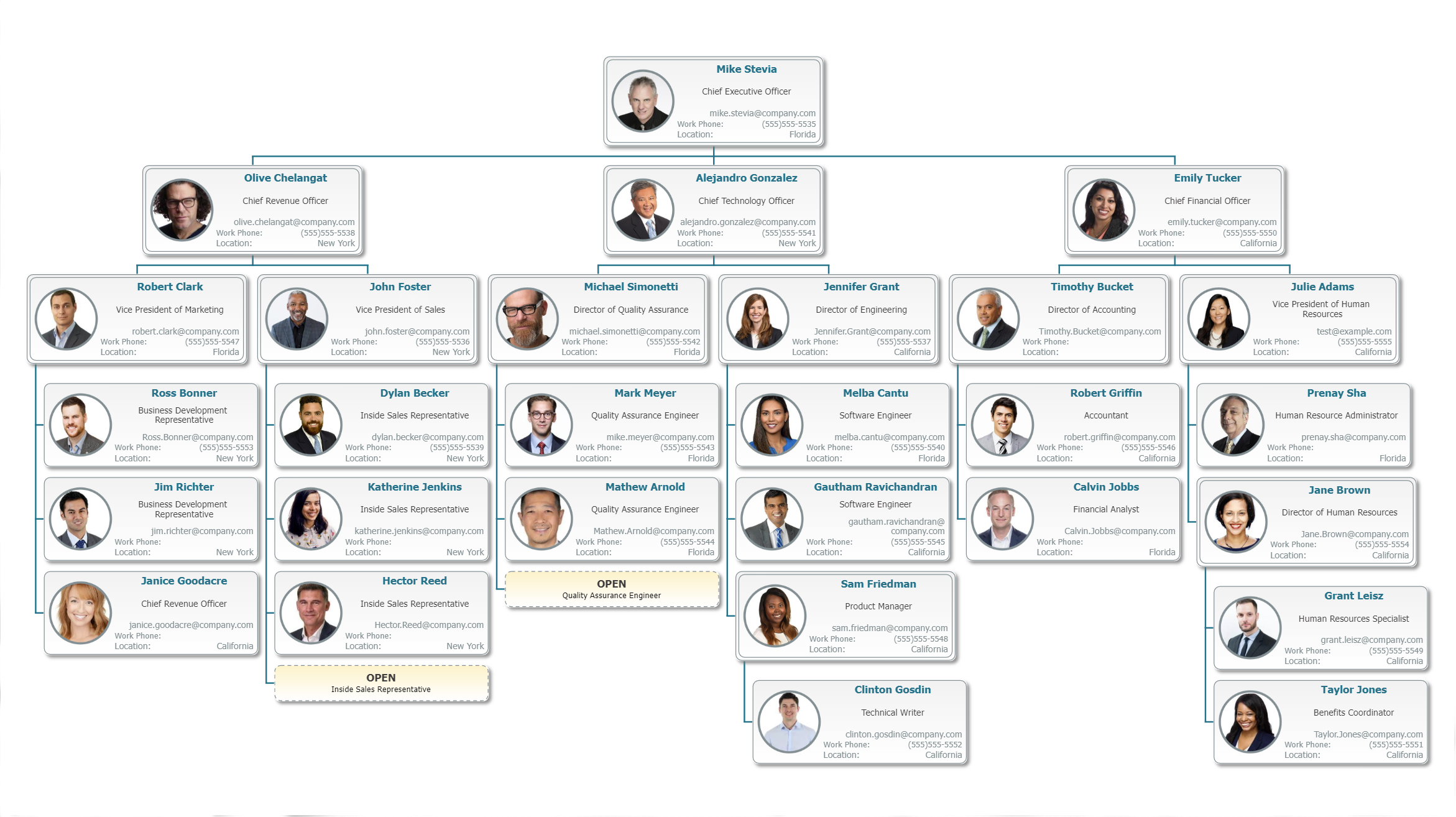July 16, 2024
8:06 AM
By OrgChart Team

Regardless of size, determining the best path for an organization is the key to success. Communication and implementation of the optimal organizational structure are essential. A well-defined org chart offers a transparent visualization of various human resource tasks, including headcount planning, employee journey mapping, succession planning, and more. Even small business owners need to establish a formal structure from the beginning to support the growth process across each stage of the business’s evolution, empowering them to make informed decisions and steer their organization toward success.
Let’s explore 9 reasons all businesses, big or small, need an org chart. Consider how your organization can gain enhanced clarity and streamlined communications while improving overall workforce management.
Before discussing an org chart’s benefits, let’s review what an organizational chart does. The main purpose of an organizational chart is to visually represent the structure of an organization. This visualization includes the hierarchy of authority, reporting relationships, and the division of responsibilities among departments and teams. Org charts help clarify the chain of command, aid in decision-making workflows, and improve overall organizational dynamics.

Org charts offer many benefits to organizations as a whole. Consider the following nine reasons every organization should leverage an org chart.
Every business requires a clear structure to help efficiently channel each employee’s contribution toward achieving company objectives. Org charts visually communicate the organizational structure clearly and consistently to every employee, helping guide and inform their contributions to team goals.
Organizations of all sizes and industries must perform various functions to meet their goals. Leaders assign specific tasks and responsibilities to individuals, groups, teams, and departments. When we fail to communicate these responsibilities clearly, staff may duplicate tasks, not complete assigned tasks, or other conflicts may arise. This kills productivity and harms the organization’s bottom line. A clear org chart helps delineate responsibilities for more effective implementation.
The relationships between employees play a key role in the growth or collapse of the organization. By clearly communicating how different staff members and groups are interconnected, an organizational chart helps prevent unnecessary conflicts and miscommunications. This clarity promotes a more cohesive workplace with greater growth, enhanced collaboration, and smoother operations.
It is difficult to evaluate managers without clearly defining their range of responsibility. An effective organizational chart illustrates each manager or director’s span of control, making it easy to assess their workload and determine whether adjustments are in order. This helps decision-makers structure and restructure responsibilities across the organization.
In most organizations, each individual or group is tasked with specific functions, yet most projects an organization undertakes require cross-functional coordination. A solid organizational chart helps streamline that coordination to better meet the organization’s objectives. Like a well-oiled machine, each employee can focus their energy and time on productive tasks while collaborating with others to achieve shared goals.
An organizational chart enables employees to identify collaborators, stakeholders, and decision-makers for any given task or issue. This helps efficiently identify and overcome roadblocks by immediately knowing who to involve when a change in course or decision is needed.
Org charts can assist in structuring work teams, carrying out budget analyses, and generating essential reports for productivity. By utilizing org charts, an organization can effectively manage its talent and financial resources, fostering enhanced growth and productivity.
Without the insights an org chart provides, it can be difficult to identify talent gaps. Essential functions that no one is accountable for are immediately apparent in an org chart. Managers can then write more efficient job descriptions and requisitions and quickly fill those needs.
Org charts are an essential tool for succession planning and career development. According to a Mercer survey, 78% of respondents would stay with their current employer if they knew they had growth opportunities and a clear career path. With an org chart, HR professionals can leverage job skills and competency data to quickly identify high-performing employees or those in mismatched teams. By offering employees a transparent organizational structure, organizational charts increase employee engagement and motivate them to perform at their best.
The benefits of org charts extend far beyond what we have already discussed. There are many additional purposes of organizational charts, including:
There are a few different types of org charts. Leaders consider many factors when selecting a structure, such as the size, industry, business goals and strategy, and organizational culture.
Hierarchical org chart–This is the most commonly utilized organizational chart. It depicts the organization’s structure with the organizational leaders at the top and lower-ranking individuals below them. A hierarchical org chart is easy to understand and offers a transparent chain of command.
Flat (Horizontal) org chart – A flat org chart can work well for organizations with few middle management levels. Typically, these charts are used in small or startup companies with highly experienced, independent employees.
Matrix org char t– A matrix org chart offers more flexibility for dynamic team structures. This type of org chart benefits organizations with dual reporting relationships amongst staff. For example, companies with employees who report to a primary manager as well as project managers may benefit from a matrix org chart.
Network org chart – For organizations with managers overseeing many internal employees and external contractors, a network org chart may work well. This type of chart reflects the complex, interconnected nature of the organization.
Regardless of the organizational structure, or the company’s unique purpose of an organizational chart, org chart software can empower organizations to effectively communicate with team members to meet their goals. Automating this process allows for streamlined communication and workforce planning.
Tags: